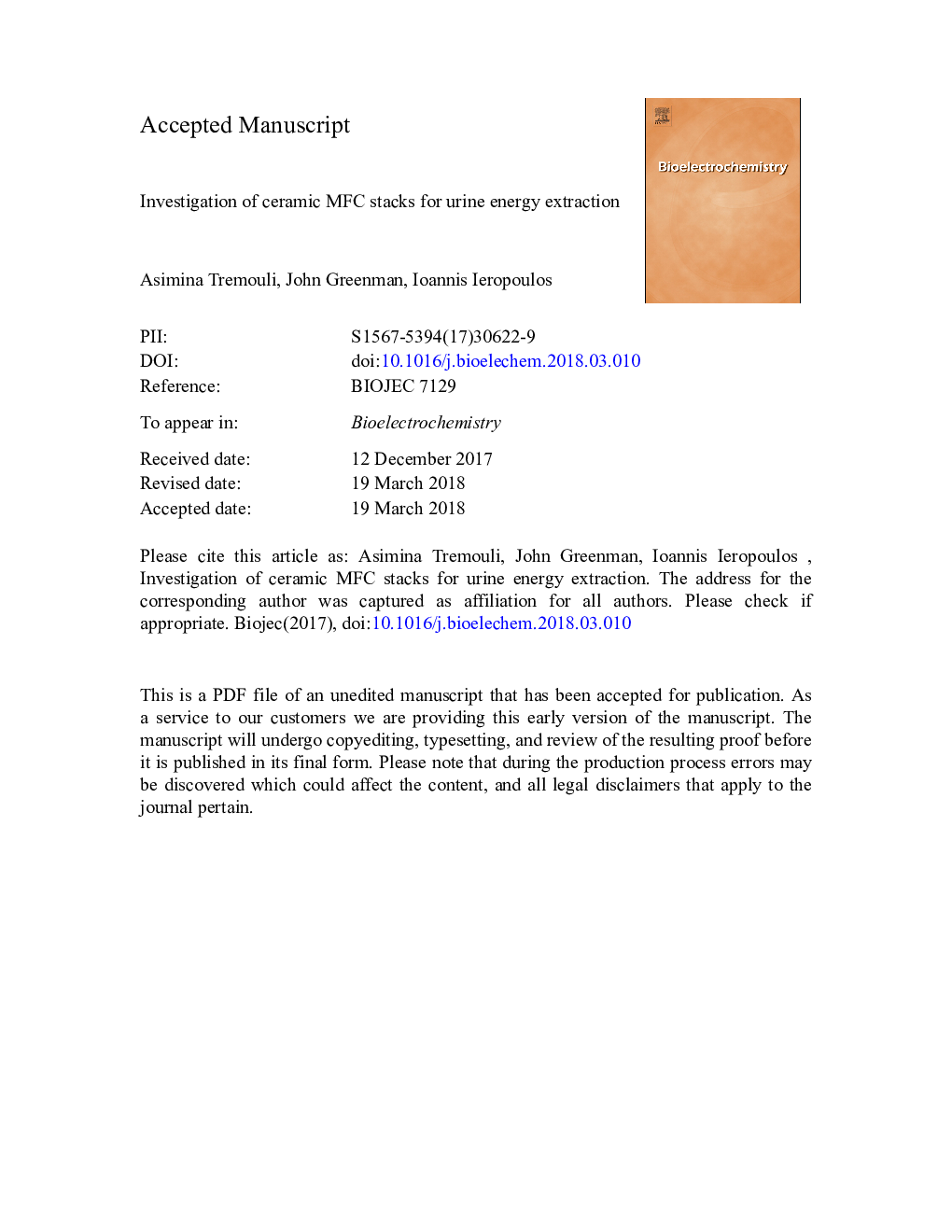| Article ID | Journal | Published Year | Pages | File Type |
|---|---|---|---|---|
| 7704296 | Bioelectrochemistry | 2018 | 32 Pages |
Abstract
Two ceramic stacks, terracotta (t-stack) and mullite (m-stack), were developed to produce energy when fed with neat undiluted urine. Each stack consisted of twelve identical microbial fuel cells (MFCs) which were arranged in cascades and tested under different electrical configurations. Despite voltage reversal, the m-stack produced a maximum power of 800â¯Î¼W whereas the t-stack produced a maximum of 520â¯Î¼W after 62.6â¯h of operation. Moreover, during the operation, both systems were subject to blockage possibly due to struvite. To the Authors' best knowledge, this is the first time that such a phenomenon in ceramic MFC membranes is shown to be the direct result of sub-optimal performance, which confirms the hypothesis that ceramic membranes can continue operating long-term, if the MFCs produce maximum power (high rate of eâ transfer). Furthermore, it is shown that once the ceramic membrane is blocked, it may prove difficult to recover in-situ.
Keywords
Related Topics
Physical Sciences and Engineering
Chemistry
Electrochemistry
Authors
Asimina Tremouli, John Greenman, Ioannis Ieropoulos,
